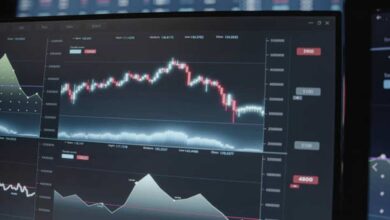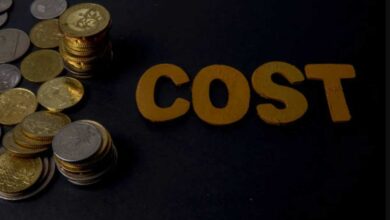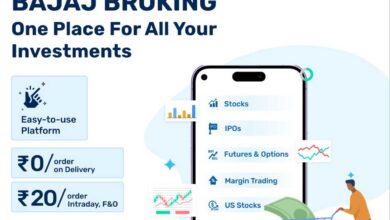New methods of capital distribution have emerged, transforming how investors and borrowers interact. One such method gaining attention is Brrrr lending. This concept reflects a rapid-fire approach to lending, characterized by swift capital movement and circulation. Here, we will delve into the mechanics of Brrrr lending, its implications for borrowers and lenders, and its broader impact on the financial ecosystem.
The Concept of Brrrr Lending
At its core, Brrrr lending represents a paradigm shift in lending practices, emphasizing speed and efficiency. Brrrr meaning the rapid sound of money being printed or circulated quickly, it brings to mind the quantitative easing policies seen in various economies. This lending approach allows for expedited access to funds, enabling borrowers to seize opportunities quickly, while lenders can enhance their returns through swift capital deployment.
The Mechanics of Brrrr Lending
Brrrr lending operates through a combination of technology, data-driven decision-making, and innovative lending models. Here are some of the key components that illustrate how this system functions:
1. Technology Integration
Modern lending platforms utilize advanced technology to facilitate Brrrr lending. Through the use of algorithms and artificial intelligence, lenders can evaluate borrowers’ creditworthiness in real-time. This not only speeds up the approval process but also allows lenders to take calculated risks based on a more comprehensive understanding of borrower behavior.
2. Data-Driven Decision Making
The use of big data plays a crucial role in Brrrr lending. By analyzing vast amounts of information—from credit scores to transaction histories—lenders can make informed decisions quickly. This data-centric approach reduces the reliance on traditional credit scoring methods, which can be slow and cumbersome.
3. Innovative Loan Structures
Brrrr lending often features flexible loan structures designed to meet the dynamic needs of borrowers. This can include short-term loans, revolving credit lines, or even peer-to-peer lending arrangements. By offering various options, lenders can attract a broader range of borrowers seeking quick access to capital.
4. Rapid Capital Deployment
One of the defining features of Brrrr lending is the speed of capital deployment. Once a loan is approved, funds can be disbursed almost instantaneously. This rapid turnaround empowers borrowers to act swiftly in competitive markets, whether they are investing in real estate, launching a new business, or managing unexpected expenses.
Implications for Borrowers
The rise of Brrrr lending has significant implications for borrowers. Here are a few key considerations:
1. Access to Capital
Brrrr lending democratizes access to capital, especially for small businesses or individuals who may have been overlooked by traditional lenders. With quick approval processes, many borrowers can secure funding that allows them to pursue opportunities they might have otherwise missed.
2. Flexibility and Customization
Borrowers benefit from the customizable loan products available through Brrrr lending. This flexibility enables them to select the terms that best fit their financial situation and goals, reducing the stress often associated with rigid loan agreements.
3. Increased Competition
The Brrrr lending model spurs competition among lenders. This competition can lead to better rates and terms for borrowers, as lenders strive to attract clients in a crowded market. However, borrowers must remain vigilant and conduct thorough research to find the best deals.
Implications for Lenders
While Brrrr lending presents numerous advantages for borrowers, it also has significant implications for lenders:
1. Risk Management
With rapid capital distribution comes increased risk. Lenders must develop robust risk management strategies to mitigate potential losses from defaults. This often involves sophisticated analytics to assess borrower profiles and predict repayment behaviors accurately.
2. Profitability and Returns
Brrrr lending allows lenders to deploy capital more efficiently, potentially leading to higher returns. By minimizing idle funds and maximizing the loan portfolio’s turnover, lenders can enhance their profitability. However, this requires a careful balance between speed and due diligence to ensure that the quality of loans does not suffer.
3. Regulatory Considerations
As with any emerging financial model, Brrrr lending is subject to regulatory scrutiny. Lenders must navigate a complex landscape of regulations designed to protect consumers while also promoting innovation. Compliance is essential to build trust and establish credibility in this rapidly evolving environment.
The Broader Impact on the Financial Ecosystem
The rise of Brrrr lending signifies a shift in the broader financial ecosystem. It illustrates a move towards more agile and technology-driven approaches to capital distribution. As this model gains traction, we can expect several overarching effects:
1. Financial Inclusion
Brrrr lending has the potential to enhance financial inclusion by providing access to capital for underserved populations. As more individuals and businesses secure funding, economic growth can be spurred, leading to job creation and community development.
2. Evolving Consumer Behavior
Consumer behavior is changing as borrowers become more accustomed to swift and flexible lending solutions. This shift may prompt traditional lenders to adapt their offerings to stay competitive, leading to broader changes in lending practices.
3. Innovation in Financial Technology
The Brrrr lending model encourages innovation within the financial technology sector. As new players enter the market, competition will drive further advancements, resulting in better services for borrowers and lenders alike.
Understanding the mechanics and implications of Brrrr lending is vital as it reshapes the financial landscape. The rapid distribution of capital is not just a trend; it represents a fundamental change in how money moves in our economy. As this model continues to evolve, its impact will be felt across various sectors, influencing everything from individual financial decisions to macroeconomic trends.








